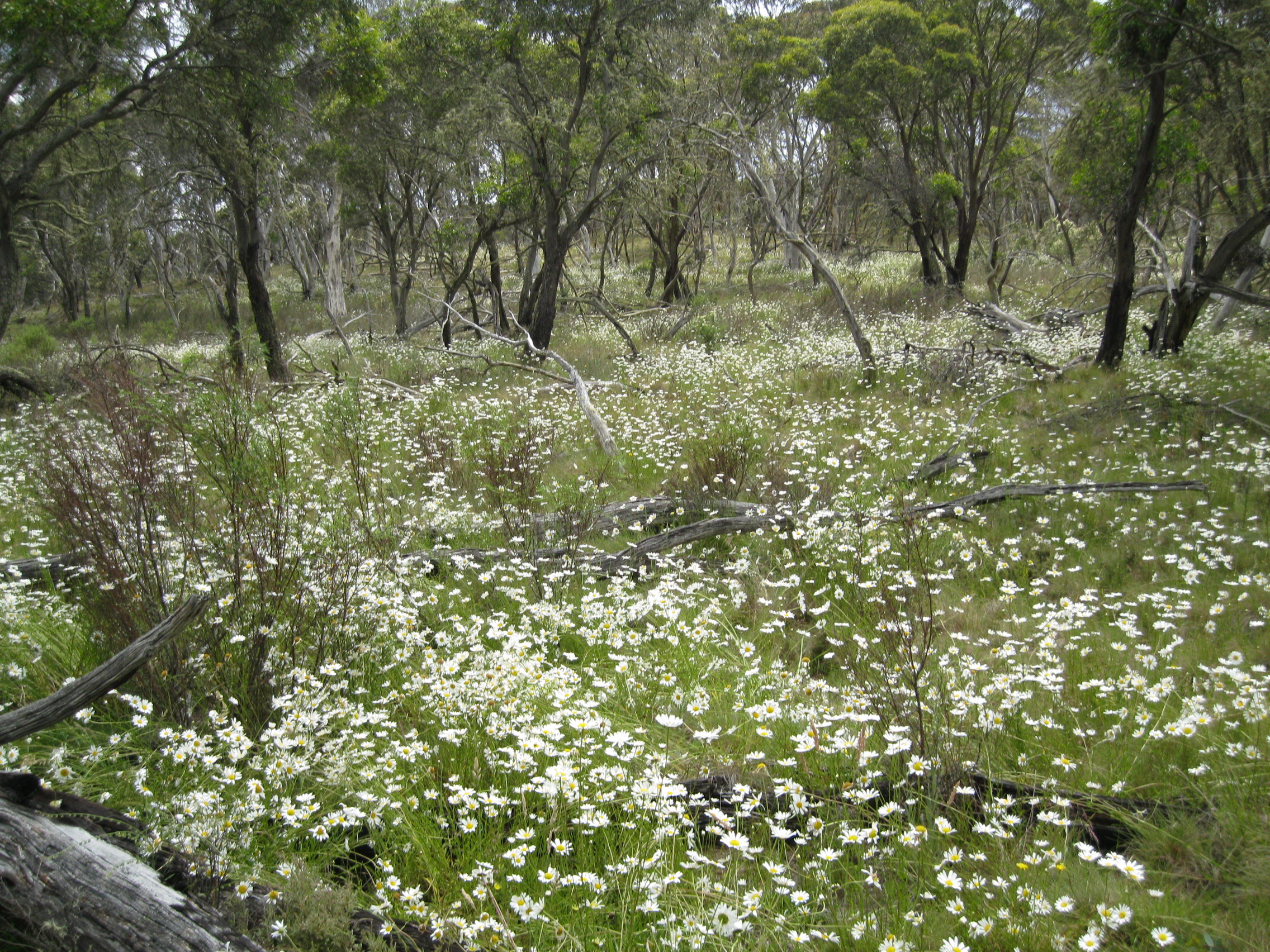Ox-eye daisy
Ox-eye daisy (Leucanthemum vulgare) is a rhizomatous perennial that is native to Europe and which has become an invader in over 40 countries (including Australia and New Zealand). In Australia, it is found in NSW, ACT, Victoria (where it is a declared noxious weed), South Australia and Tasmania.
This sub-project focuses on the root-feeding weevil Cyphocleonus trisulcatus, a second promising candidate biocontrol agent for ox-eye daisy. A first promising candidate agent, the rhizome-feeding moth Dichrorampha aearata was tested in both Switzerland (by CABI) and in quarantine in Australia (by NSW DPI) as part of a previous project supported by the Australian Government and an application to release it in Australia is currently being prepared. However, ox-eye daisy like other invasive Asteraceaous weeds (e.g. parthenium weed) is very unlikely to be controlled by one biocontrol agent. It is thus considered prudent and cost-effective to test a second most promising agent while all the relevant Australian non-target species gathered to test the first candidate agent are still in culture. Approval for the release of the weevil in Australia will be sought from the relevant authorities, pending results indicate that it does not pose a threat to non-target species.
Andrew McConnachie of NSW Department of Primary Industries is leading this sub-project.

An infestation of ox-eye daisy (Leucanthemum vulgare) in NSW.
Previous research
In 2008, a programme was initiated to investigate the prospects for the biocontrol of ox-eye daisy in North America. Over the last 12 years, CABI Switzerland have identified and studied a suite of promising candidate agents including the root-feeding moth Dichrorampha aeratana (Lepidoptera: Tortricidae), root-feeding weevil Cyphocleonus trisulcatus (Coleoptera: Curculionidae) and flower head-mining fly Tephritis neesii (Tephritidae), among others. Of these, the root-feeding moth was identified as holding the most immediate promise in terms of specificity and is being developed further as the first biocontrol agent for North America.
Ox-eye daisy was nominated and endorsed by the national Environment and Invasives Committee as a target for biocontrol in Australia in February 2020. The root-feeding moth was the first candidate agent investigated for the biocontrol of ox-eye daisy in Australia as part of a project under the Australian Government programme Rural Research and Development for Profit (RRnD4P) (Round 2; 2016-2020). An application for the release of this moth in Australia is currently being prepared. Concurrently in the same project, a rearing colony of the root-feeding weevil was established at CABI Switzerland in 2019 to conduct preliminary no-choice oviposition and larval development tests on 14 non-target species. Results were encouraging as larvae of the weevil were only recorded on ox-eye daisy and Tanacetum parthenium, albeit in very low numbers on the latter species.

Adult (left) and larva (right) of the root-feeding weevil Cyphocleonus trisulcatus, a candidate biocontrol agent for ox-eye daisy (Photos: CABI Switzerland).
Trust-funded sub-project
The key activities of the sub-project are to:
- Import the weevil into an Australian quarantine facility and establish/maintain a culture.
- Conduct host-specificity tests in Switzerland (subcontract to CABI; no-choice and open field tests) and in quarantine in Australia (no-choice and paired-choice tests).
- Assess ox-eye daisy seedbanks and population dynamics at monitoring sites (Kosciuszko National Park, Mongarlowe, Mt Hotham) to add to a long-term dataset initiated in a previous project to assist with future evaluation of biocontrol.
- Prepare and submit to the relevant authorities an application for its release in Australia for the biocontrol of ox-eye daisy, pending results indicate that the insect does not pose a threat to non-target species.


